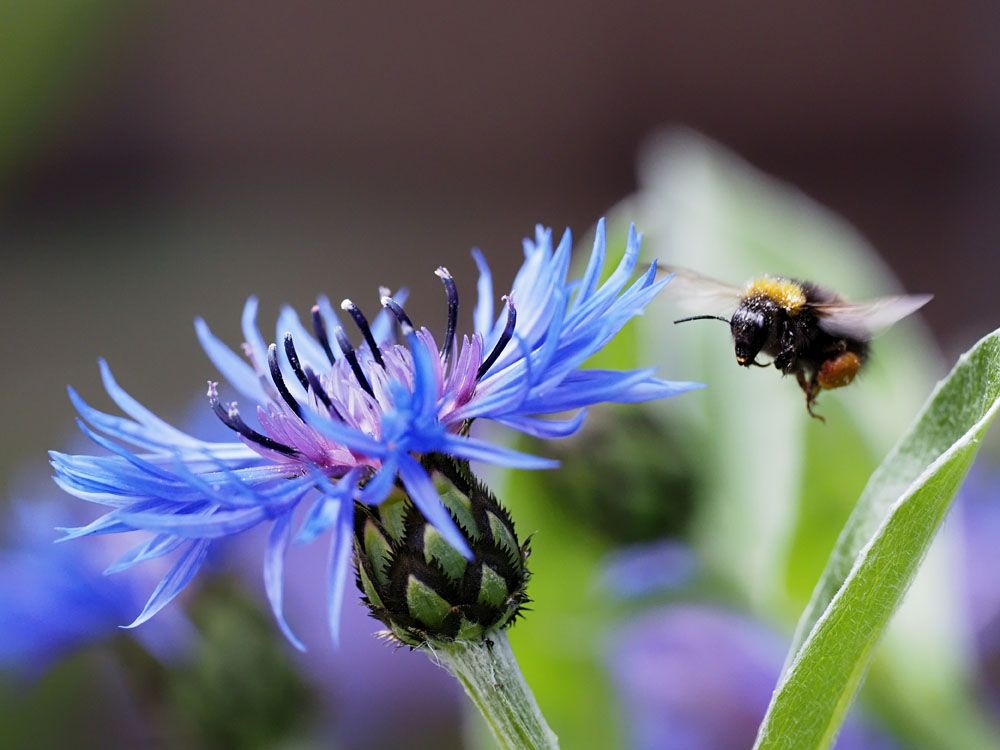
Bumble Bees – Bombus spp.
Bumble Bees
Genus: Bombus
Common Name: Humblebee, bumblebee
Appearance: Bumblebees are hairy, rounded insects ranging in size from 15mm to 25mm. They are black with yellow or orange stripes all over. The females exhibit a pollen basket at their hind limbs for the collection of pollen.
Host Plants or Food: They feed on pollen and nectar from flowers. The nectar is added to their stores while the pollen is used to feed their young ones.
Territory: Throughout North America, Western USA, Eastern USA, and Europe
Mode of Damage: Like honey bees, they feed on flowers and sap. Not only do they help in pollination, but they also produce honey, making them one of the most beneficial garden insects.
Habits and Life History:
Bumblebees prefer a temperate environment with higher altitudes and latitudes and rich flora.
Although smaller than honey bees, bumblebees also live in colonies consisting of a queen bee, workers, and drones.
During winters, the queen bee goes underground for hibernation.
Unlike honey bees, bumblebees do not make and store large amounts of honey.
The queen bee, after mating, hides into a nest and lays her eggs. The eggs hatch into worker bees that take over the pollen collection duties.
The queen goes back to egg-laying, which first hatches into 50 to 600 more worker bees and then into male and queen bees.
